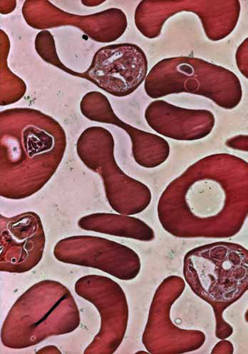 The Scientist | Do parasites use their own microRNAs to hijack host cell pathways? RNA silencing, which fine tunes up to 30% of genome during development,1 also plays a major role in innate antiviral and antibacterial defenses in plants, insects, and animals. But the sword cuts both ways, with bacteria and viruses undermining the host’s microRNA (miRNA)-based defenses to allow their own successful replication. For example, the hepatitis C virus appears to control a host miRNA to promote its own replication,2 and in plants, the bacterium Pseudomonas syringae interferes with host processes that normally suppress bacterial replication by using a bacterial E3-ubiquitin ligase to degrade a host miRNA.3
The Scientist | Do parasites use their own microRNAs to hijack host cell pathways? RNA silencing, which fine tunes up to 30% of genome during development,1 also plays a major role in innate antiviral and antibacterial defenses in plants, insects, and animals. But the sword cuts both ways, with bacteria and viruses undermining the host’s microRNA (miRNA)-based defenses to allow their own successful replication. For example, the hepatitis C virus appears to control a host miRNA to promote its own replication,2 and in plants, the bacterium Pseudomonas syringae interferes with host processes that normally suppress bacterial replication by using a bacterial E3-ubiquitin ligase to degrade a host miRNA.3New research is pointing to ways that the host cell mobilizes its miRNA machinery to fight intracellular eukaryotic parasites in addition to bacteria and viruses. The results offer the possibility that parasites may have developed tactics to use these defenses to their advantage, remarkably by using their own small RNA.


0 comments:
Post a Comment